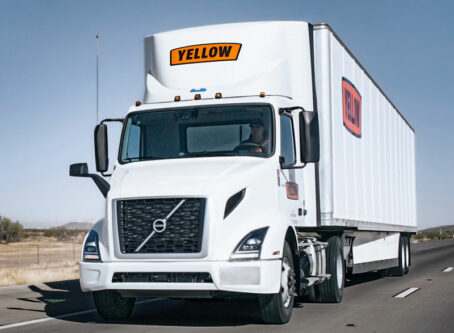5G cellular is on the way
Here comes 5G, the much hyped fifth generation of wireless cellular technology. Its high speeds will make amazing things possible. The highly advanced technology will change your life, say promoters. But that change could be sickness or death, say 5G protesters. More about that later.
If it works as advertised, 5G will make your phone as fast and capable as cable broadband – faster in some cases. It will increase wireless speeds by an order of magnitude – as much as 100 times faster than current cellular systems, up to 10 times faster than most wired desktop systems. In fact, where 5G is available on its network, Verizon offers what it calls 5G Home that can replace your current cable service. Unlike mobile service, 5G for the home must be between two fixed points. Still, its speed will rival Verizon’s own, very speedy FIOS fiber optic service.
5G already works in a few test cities, but not always that well. Earlier this year, Verizon invited technology reporters to try it in Chicago. The speeds were low, the reporters wrote, and service was often unavailable. Not a great start, but Verizon promised they were working on it. In any case, 5G from Verizon, AT&T, T-Mobile, and others is up and running in many test locations and you’ll see 5G popping up in many markets this year and more in 2020. You’ll find a list here.
Service providers are optimistic about deployment. Some people are more cautious.
“It’s going to take several years before 5G becomes mainstream, and it’s going to take several more years for it to actually be affordable for most customers. And you also have to remember it will take a while to propagate to rural areas,” said Seth Spiel, head of product and telematics at KeepTruckin.com, the smartphone driver log company.
The 5G wavelengths can be blocked by objects like buildings and cannot travel far in any case. Coverage will require small antennas placed with relatively short distances between them. Lots and lots of small antennas.
5G in trucking
Beyond speed, Spiel pointed out, 5G also reduces latency – the brief instances between sending and receiving – from a few milliseconds to nearly none. That will mean a lot for trucking, though drivers may not always be happy about it.
For example, 5G-enabled systems will be able to measure and transmit virtually every element of the driving experience from a moving truck – video, sound, vibrations, and bumps. Among many other things, that will enable drivers to pilot trucks from remote locations more effectively. Clearly 5G will enhance the prospects for autonomous truck development, particularly for Starsky Robotics, the San Francisco-based company developing just such remotely controlled systems. With 5G, all it will lack is smell.
Spiel said 5G will make it possible to move computer functions to remote servers in what we refer to as “the cloud.” Here’s an example: now information from forward-looking cameras goes to an on-board processor that decides if the truck is drifting from its lane. If so, the processor warns the driver; in an autonomous truck the system makes the necessary correction.
“That stuff is done on the vehicle. Tesla for example has a lot of very expensive equipment for that, right?” KeepTruckin.com’s Spiel said. “For premium Tesla purchasers, that makes sense. But if you’re running a for-profit trucking fleet, that might be a little bit prohibitive. So rather than putting all that equipment on all those vehicles, 5G with its improved bandwidth and reduced latency opens up the opportunity to do that stuff in the cloud where it’s more economical.”
They call it “cloud computing.” Data from cameras and sensors goes directly to those servers in the cloud over 5G which carries back warnings for the driver or specific instructions for autonomous systems. This is where latency becomes extremely important. With the software that processes critical safety data a long way from the truck, there can be virtually no gaps in transmission. Using cloud computing with slower, older systems, the truck could be in the woods before the driver is warned he’s drifting. No matter how good its boosters say it is, the 5G and the cloud concept will require a leap of faith for many truckers.
One more thing about cloud computing: all kinds of software can be accessed from the cloud. Fleets won’t need onboard computers, only the sensors, cameras, and access to the cloud. That will make deployment of new systems cheaper. That in turn means we – especially company drivers – will be seeing a lot more of them, like it or not.
It almost goes without saying 5G will bring cable-quality entertainment to your truck if you’re close enough to a cell antenna. You’ll be able to download or stream TV and movies easily. Your cellphone can become your movie screen. Flat screen TV for 5G can’t be far off.
When, where, and how safe
To take advantage, you’ll need a new cell phone since 5G is not compatible with older devices. At publication time, 5G phones were available from Moto and Samsung. By the time you read this, LG and other phone makers will have products on the market. For the moment at least, Apple isn’t saying when it will release a 5G iPhone.
The term 5G follows four previous generations of wireless cellular service. The first, of course, was 1G, the original analog cellular networks launched in 1979 in Japan. That was followed by 2G, which offered digital service in the mid-1980s. Digital signals enabled the earliest version of what we know today as texting. It was also possible to encrypt digital signals so they would be useless to anyone who intercepted them, something scammers often did back in the analog days. Later versions 3G and 4G provided higher levels of speed and bandwidth, ultimately enabling the transmission of images and video.
Oh yeah, the death or sickness thing. There has always been controversy about cell tower radiowaves. Since 5G uses signals in the microwave range and will require many more antenna sites, scientists are sounding alarms. Some want to block 5G deployment altogether. They point to worrisome studies on current cell use and incidents like one in the Netherlands last November, when more than 300 starlings fell dead from the trees as a 5G antenna was tested at a railroad station in The Hague nearby.
That kind of thing hasn’t been reported anywhere else, but opposition to 5G deployment has arisen around the world. Beyond long-term effects on people, some scientists claim 5G microwaves will have deadly impacts on small wildlife, particularly insects. On the other hand, most say 5G will be safe.
Not that the debate matters. We’ll get to find out for ourselves. At this point, with billions of dollars at stake, nothing will stop deployment of 5G.









